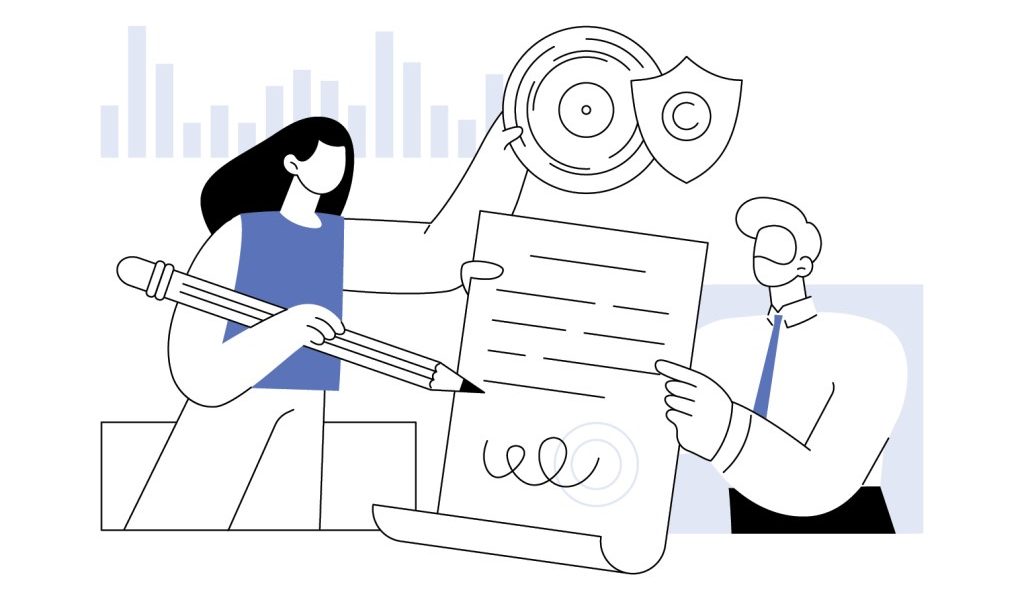In 1997, David Bowie made a groundbreaking move in the music industry by opting for a licensing agreement with EMI America, instead of signing a conventional recording contract. This innovative deal allowed the label to hold the rights to over two dozen of Bowie’s albums for a period of 15 years. After this timeframe, the rights would revert back to Bowie, a rarity in the history of the music business. As Tim Mandelbaum, an entertainment attorney, recalls, “For 99% of the artists on the roster, the label owned the recordings in perpetuity.” This arrangement marked a significant departure from the norm and showcased Bowie’s forward-thinking approach to artist rights and ownership.
Once a unique case, Bowie’s approach has become increasingly common among contemporary musicians. Many artists today are now negotiating for licensing deals right from the outset of their careers. As Craig Averill, a music lawyer, notes, “If I have an artist with a couple different labels that are interested, it’s fairly easy for them to retain copyright.” This shift reflects the growing awareness among artists about their rights and the potential for retaining ownership of their work, which is becoming a standard expectation rather than an exception in the industry.
The music industry is experiencing a significant transformation with this shift towards licensing agreements, and the long-term effects on major labels are still uncertain. Traditionally, signing artists to contracts where the labels gained ownership of recordings allowed these companies to build extensive catalogs, granting them considerable leverage in future music licensing negotiations, particularly with emerging platforms like streaming services. “These labels were built on owning these copyrights,” says Larry Katz, a seasoned music attorney with over 30 years of experience. “This is a really significant transition: The model going forward is they’re basically renting music for a license period.” This change could redefine the power dynamics within the music industry as artists gain more control over their creative output.
“What does this mean for the future sustainability of the music industry?” Mandelbaum questions. “If the majority of deals become agreements where the labels don’t own the recordings and they revert to the artist at some date in the future, what does that mean for the continuing growth of the catalogs that have enabled the majors to remain dominant?” This inquiry highlights a pivotal concern regarding the future landscape of the music business, as record labels may need to adapt their strategies to maintain their competitive edge in an evolving market where artists increasingly demand ownership and control.
Recent statistics reveal that songs released within the last five years accounted for nearly 50% of on-demand streams in the United States in 2024, according to Luminate’s year-end report. Concurrently, the rise of licensing deals during the same period suggests that a substantial portion of these popular tracks may revert to the artists who created them, thereby slipping out of the grasp of major labels. This trend underscores the potential shift in control over music catalogs, indicating that artists may reclaim ownership of their work as licensing deals become a more prevalent aspect of the industry.
Record labels are increasingly compelled to offer artists licensing agreements due to the growing ability of musicians to cultivate fan bases and achieve success independently. The duration of these licenses varies, depending on the artist’s negotiating power and market presence. In many instances, labels aim to secure at least 20 years of rights, as highlighted by Carron Mitchell, a partner at Nixon Peabody. This reflects the labels’ desire to maintain control while accommodating artists’ demands for more favorable terms that recognize their contributions and market value.
However, when a label is particularly eager to sign an artist, they may make exceptions to this standard. Loren Wells, a partner at Wells & Kappel, recently encountered a major label that proposed a 10-year license as an opening bid to secure one of his clients. “I like the license to be as short as humanly possible,” says Audrey Benoualid, a music attorney who emphasizes the importance of brevity in license agreements. “I try to keep it below 10 years if I can.” This desire for shorter license terms reflects a growing trend among artists to seek arrangements that provide them with greater flexibility and control over their music in the evolving landscape of the industry.
Despite the advantages of licensing agreements, artists typically do not have the luxury of simply signing a deal and walking away with their recordings after the agreed term. The license period often begins nine to 12 months after an artist releases their final album under the agreement. For instance, if an artist takes five years to deliver the three albums they owe the label, the countdown on the license period doesn’t commence until around the sixth year. While this structure still represents a substantial improvement over traditional perpetuity deals, it is essential to note that under the U.S. Copyright Act, artists who signed away their recordings indefinitely are granted a chance to regain those rights after 35 years, but this is applicable only within the United States and does not extend internationally.
In the realm of licensing agreements, acts that experience limited commercial success often find it challenging to reclaim their recordings. Typically, the rights revert to the artist only if they manage to recoup their expenses. Depending on the negotiated terms, however, artists may have the option to buy themselves out of the agreement by settling the unrecouped balance or paying a percentage above it, as explained by Ray Garcia, a partner at Rimon Law. This complex aspect of licensing deals emphasizes the importance of negotiation and understanding the financial implications tied to these agreements, particularly for artists navigating their careers in a competitive landscape.
Even with the rise of licensing deals, record labels have strategies to extend their hold on recordings beyond the initial agreement. “They’ll try to build in options where at the end of the initial period, they can re-license the rights for five or 10 more years by paying an advance equal to several years’ worth of net profits,” explains Jonathan Altschul, a music lawyer. Labels also frequently incorporate “matching rights” into the initial contract, as noted by Josh Binder, a partner at Rothenberg Mohr & Kappel, “so that whatever the artist’s next deal is, the original label gets a chance to match it.” This demonstrates the lengths to which labels are willing to go to maintain a foothold in the evolving dynamics of artist-label relationships.
It is evident that more artists are entering into licensing agreements with major labels now than ever before in the history of the music industry. Altschul reveals that he “can’t remember the last time” he has relinquished ownership of rights during negotiations for an artist client. This trend signifies a substantial shift in the balance of power within the industry, as artists increasingly assert their rights and demand more equitable terms in their dealings with record labels.
The changing landscape of the major labels’ business has been significant in recent years, and the implications of this shift towards licensing deals may not have a drastic effect on their overall operations. “These are public companies now, and their duty is to their shareholders,” explains Loren Wells. “Quarterly earnings reports have outsized importance. If that means licensing the track for 10 years [to boost those earnings], sure — whatever it takes to keep shareholders happy.” This perspective highlights the financial pressures facing major labels as they navigate the evolving demands of artists while maintaining profitability for their investors.
With recent data indicating that songs released in the last five years accounted for nearly 50% of on-demand streams in the U.S. in 2024, this trend has remained consistent since 2020, according to statistics from Luminate. Moreover, tracks released within the last 15 years constitute nearly 80% of on-demand U.S. streams. If this pattern continues, and major labels persist in securing licenses that extend for 15, 20, or even 25 years, attorneys warn that the labels will likely maintain substantial control over most prominent artists’ catalogs during their peak streaming periods — a critical time when their music is generating maximum revenue.
However, record companies may face challenges if several successful artists with short-term licensing agreements choose to transfer their catalogs elsewhere once their deals expire. Oren Agman, an entertainment attorney who previously worked for a major label, believes that “license deals definitely have a negative impact on the labels’ business.” He estimates that a record company could potentially earn “millions” more in royalty income through a perpetuity deal compared to a 10-year licensing agreement. This potential loss underscores the necessity for labels to adapt to the evolving needs and demands of artists in a rapidly changing industry.
Despite the allure of changing labels, Mandelbaum points out that moving a catalog can be an arduous task for an artist. “It’s a gigantic pain,” he notes, “and some inefficiencies and loss of income occur during that switchover.” For many artists, it often proves more practical to remain with their current label and collaborate with the team that already manages their music, including handling payments to producers and songwriters. Furthermore, Mandelbaum emphasizes, “the incumbent label can offer things to the artist that nobody else can offer.” For instance, in exchange for extending the license, the label may improve the artist’s share of profits on the music they have already released, creating an incentive for them to stay put.
As licensing agreements become more prevalent and their duration continues to shorten, record labels will need to revisit negotiations more frequently and with reduced leverage compared to the era of perpetuity deals. “An artist who signed a deal when they could barely pay rent gets a second chance at valuing their music,” states Lulu Pantin, a music lawyer. “The artist may have learned how the industry works, have a proven track record of financial success, and be in a position to make new demands in order for the label to keep earning on the original songs.” This evolving dynamic presents a new landscape for artists to negotiate better terms and retain greater control over their musical careers.
In a world increasingly characterized by licensing arrangements, Altschul predicts that the recorded segment of the music business could begin to resemble the music publishing industry. “We saw a wave of acquisitions in publishing over the last three to five years,” he observes. “In many cases, that was because artists had either retained partial ownership of their publishing catalogs or had obtained reversions.” This trend indicates a potential shift in how recorded music rights are managed and valued, suggesting that artists may have more opportunities to negotiate favorable terms regarding their work.
“I suspect that 10 or 15 years down the line, we may see that happen more with recorded music,” Altschul continues. “Labels will have to write big checks to reacquire the rights.” This foresight underscores the evolving nature of the music industry and the potential for artists to reclaim ownership over their work, leading to a more equitable relationship between musicians and record labels in the future.






